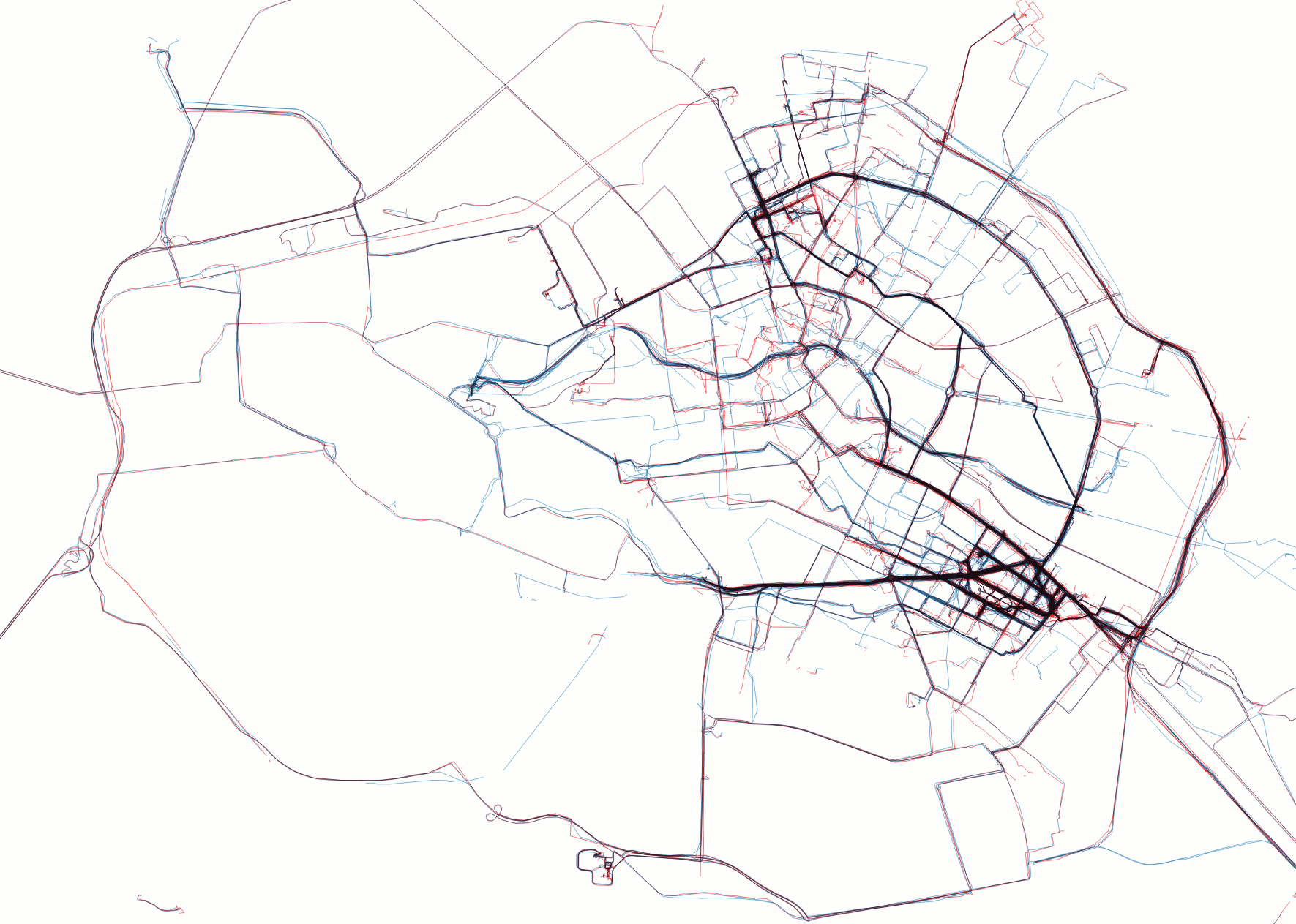
Sophia New and Daniel Belasco Rogers “All GPS Traces in Berlin in 2011-2012”
As part of the release of my book, Walking as Artistic Practice (pre-orders now open for softcover shipping in April!), I’m going to be publishing some brief interviews with the various artists, authors, researchers, creatives, collectives, and platforms whose art practice, written material, or other works I cite and mention.
My 26th interview in this series is with Sophia New and Daniel Belasco Rogers who have worked together as the performance duo plan b since moving to Berlin in 2001. Originally from London, their work is concerned with site, intimacy, public space, technology and durational performance. They have a long-term practice of recording everywhere they go, everyday, with a GPS. From this collection they make prints, drawings, performances, video works, sculptures and carpets. As well as exhibiting and performing internationally, they have a pedagogical practice that has seen them give workshops in Banff in Canada, UC Berkley, São Paulo, Tokyo and Helsinki among other locations. Since 2010, they have regularly taught on a variety of courses including Hafen City University, Hamburg, Hochschule für Grafik und Buchkunst, Leipzig, Folkwang Universität der Künste and the University of Arts, London. Between 2020–2023 they were guest professors for Studium Generale at the University of Arts Berlin.
EM: First, thank you for chatting with me about your collaborative work, All GPS Traces in Berlin in 2011-2012 (2012). I cite this project in chapter two (Analyzing Walking Works) in the subsection on “Forms>Two-Dimensional.” How would you describe the project for people who might not be familiar with it?
SN & DBR: This is less of a project for us and more of an ongoing life practice: we have been recording everywhere we go for over 20 years now. It started when we relocated from London to Berlin to see how we were moving in a new city. Dan started this by doing it manually but by chance came across a GPS on a residency and realised that was a way of ‘drawing’ the traces. We call this practice ‘The Drawing of our Lives’. Very concretely, we take a GPS (the old, clunky type, not our smart phones – they weren’t around when we started) with us every time we leave our flat or any building we are in, turn it on and record every journey we take. Over time, what is inevitably revealed, much like a rubbing on something textured, is the structure of Berlin, the city we have lived in for two decades. Because it reveals urban structure, it is sometimes referred to as mapping but if it is a mapping, then it is a mapping ‘from below’ rather than from above (sousveillance not surveillance), at the level of the street, rather than the all-seeing bird’s / satellite’s / drone’s eye view. As artists moving between visual art and performance, our practice is often to ‘narrate’ these drawings, revealing the human events in the seemingly abstract if recognisable traces. Alongside the thousands of everyday, forgotten trips to shops in our drawings, are monumental life events like driving back from the birth house with our newly born daughter in 2005.
EM: What are your thoughts on walking as artistic practice?
SN & DBR: As artist researchers and pedagogues we reflect on walking quite a lot but our GPS drawings record every movement above ground, regardless of whether it is made on foot, on a bike, in a car, a bus, a train or a boat. It allows for contemplative, reflective processes and experimentation. We often refer to the derive, Situationalism and pyschogeography but also algorithmic walks instigated by Williem Van de Bek. Dan has taken part in the sideways festival in 2012 and go to meet the anthropologist Tim Ingold whose work we have always admired. The Walking Artist Network is also a great resource that we refer to. As keen cyclists we are also reminded when walking what different speeds allow you to see, often more detail and unnoticed elements. As an artistic practice it is about framing an experience of looking when moving and finding new modes of perception.
EM: Can you tell us about any upcoming or recent projects you are excited about?
SN & DBR: Being so embedded in our daily lives and continuous, our practice is, to a certain extent, seasonal. The traces blossom and flower in spring and rather retread indoors in winter, especially in Berlin. One indoor activity we can always partake in is our relatively recent method of making the digitally recorded traces material through wool carpets that represent time spent inside and outside. Each carpet represents the movements of one of us for one year and is comprised of 365 rows, one row per day and 72 knots across where one woollen knot represents 20 minutes. If we were outside, the knot is black, otherwise it is natural wool colour. We refer to these works as Knotting Time and you can see them here https://planbperformance.net/w